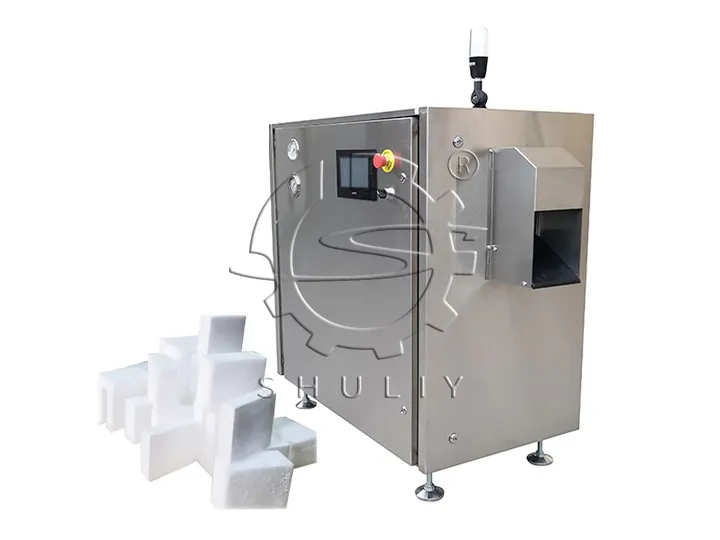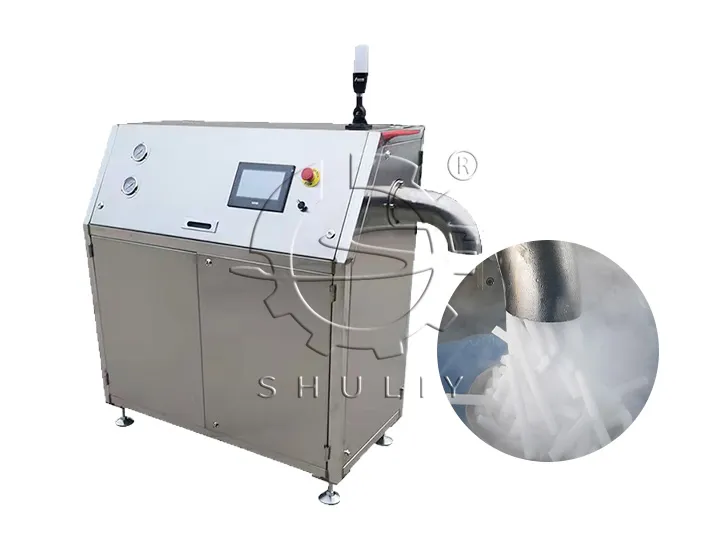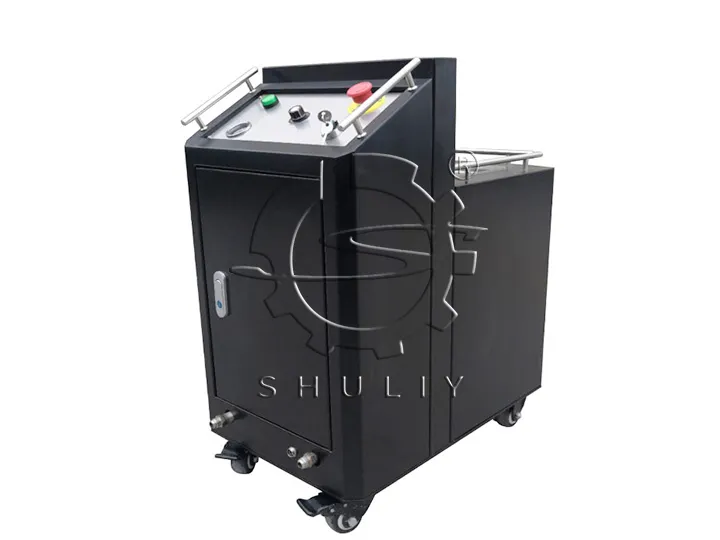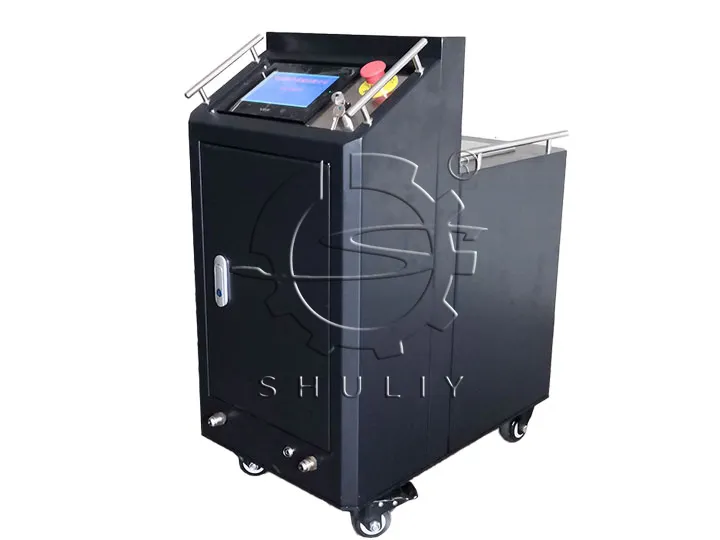Bloques de hielo seco vs. Pellets: ¿Cuál es adecuado para su negocio?
Cuando una empresa decide producir su propio hielo seco, una de las primeras y más críticas preguntas es: “¿Deberíamos producir bloques o pellets?” La respuesta no se trata de cuál forma es "mejor" en general, sino de cuál es más adecuada para su aplicación específica. El debate sobre bloques de hielo seco vs pellets se basa fundamentalmente en la física y la función.
Entender las diferencias físicas fundamentales entre estos dos formatos es clave para realizar una inversión informada en el tipo correcto de equipo de producción.
La Ciencia de la Sublimación: La Superficie es Todo
Tanto los bloques como los pellets son dióxido de carbono sólido a -78.5°C (-109.3°F). Sin embargo, se comportan de manera muy diferente debido a un factor principal: la relación área de superficie a volumen.
- Bloques de Hielo Seco: Un bloque sólido tiene la menor área de superficie posible para su volumen. Esto significa que menos de su superficie está expuesta al aire ambiente, lo que resulta en una tasa de sublimación significativamente más lenta (el proceso de pasar de sólido a gas directamente).
- Pellets de Hielo Seco: Una colección de pellets tiene una superficie total significativamente mayor para el mismo peso. Cada pequeño pellet está rodeado de aire, lo que provoca que sublimen mucho más rápido y liberen su energía de enfriamiento más rápidamente.
Este único principio dicta el caso de uso ideal para cada formato.
Cuándo Elegir Bloques de Hielo Seco: Para Longevidad y Enfriamiento a Granel
La baja tasa de sublimación de los bloques los convierte en la opción superior para aplicaciones donde se requiere un enfriamiento sostenido y a largo plazo.
Aplicaciones Principales:
- Transporte Frío de Larga Distancia: Al transportar productos sensibles a la temperatura como productos farmacéuticos o alimentos congelados a largas distancias, los bloques son ideales. Duran más, reduciendo la necesidad de re-enfriamiento y asegurando la integridad del producto a su llegada.
- Almacenamiento de Gran Volumen: Para congeladores de paso o grandes contenedores aislados, unos pocos bloques grandes pueden mantener temperaturas de congelación durante períodos prolongados con mínima intervención.
- Servicios de Catering y Eventos: Los bloques se pueden colocar en enfriadores no eléctricos para mantener la comida y las bebidas frías durante la duración de un evento sin convertirse en un charco de agua.
Para lograr la alta densidad necesaria para una tasa de sublimación lenta, los bloques se forman bajo una inmensa presión. Este proceso requiere unamáquina robusta de bloques de hielo seco, que utiliza un potente sistema hidráulico para comprimir la nieve de CO₂ en una forma sólida y duradera.
Máquina Avanzada de Bloques de Hielo Seco para Producción de Hielo Seco
Cuándo Elegir Pellets de Hielo Seco: Para Velocidad y Precisión
El poder de enfriamiento rápido y la alta superficie de los pellets los hacen perfectos para aplicaciones que exigen velocidad, cobertura y precisión.
Aplicaciones Principales:
Granallado con Hielo Seco: Este es el caso de uso principal para los pellets. Su pequeño tamaño les permite ser acelerados por aire comprimido, proporcionando un método de limpieza potente pero no abrasivo que es altamente efectivo para equipos industriales, moldes y restauración histórica.
Procesamiento de Alimentos: Los pellets se pueden mezclar directamente en productos alimenticios (como carne molida o masa) para una reducción rápida y uniforme de la temperatura durante el procesamiento sin añadir humedad.
Laboratorio e Investigación: En los laboratorios, los pellets proporcionan enfriamiento rápido y bajo demanda para preservar muestras biológicas o enfriar reacciones químicas.
La fabricación de estos pellets uniformes de pequeño diámetro es un proceso distinto que requiere unamáquina de pellets de hielo secoespecializada, que extruye la nieve de CO₂ a través de una placa de matriz para crear el tamaño deseado.
Tomando la Decisión Correcta: Un Resumen
La decisión entre bloques de hielo seco y pellets se reduce en última instancia a su necesidad comercial principal.
| Característica | Bloques de Hielo Seco | Pellets de Hielo Seco |
|---|---|---|
| Tasa de Sublimación | Lenta | Rápido |
| Función Principal | Enfriamiento sostenido y a largo plazo | Enfriamiento y granallado rápido y preciso |
| Mejor Para | Transporte de larga distancia, almacenamiento a granel | Granallado con hielo seco, mezcla de alimentos |
| Manejo | Más fácil para colocaciones grandes y simples | Mejor para procesos automatizados, mezcla |
| Unidad de Producción | Prensa de Bloques Serie HR-KZ | Pelletizadora Serie HR-KL |
Al analizar sus requisitos operativos fundamentales en comparación con las propiedades físicas de cada formato, puede seleccionar con confianza el equipo de producción adecuado para maximizar la eficiencia y el retorno de inversión.




